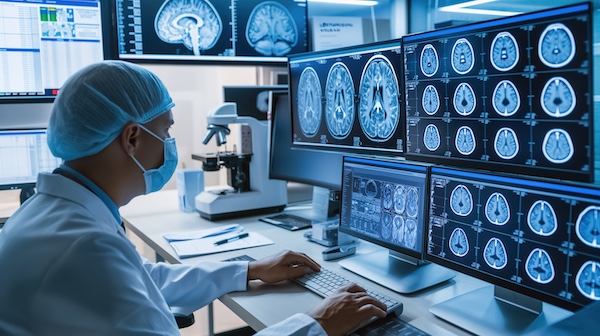Autism Spectrum Disorder (ASD) affects millions of children and adults worldwide, but despite decades of research, there’s still no single, clear-cut answer to what causes it. As a parent, it’s natural to want to understand why your child has autism and whether anything could have been done to prevent it.
While the exact cause remains unknown, scientists have made significant progress in uncovering the factors that contribute to autism.
Below, we’ll break down what research has revealed so far and why autism is best understood as a condition shaped by multiple influences rather than a single trigger.
Autism Is a Complex, Multifactorial Condition
Autism is a neurodevelopmental disorder, meaning it affects the way the brain develops and processes information. Rather than being caused by one event or factor, autism usually arises from a combination of genetic and environmental influences.
This complexity is why no two people with autism have exactly the same experiences, traits, or challenges.
For more details, check out the CDC’s overview of ASD.
Recent Posts
- “Respond and Expand”: A Simple Way to Boost Communication in Children with Autism
- What Causes Autism? Understanding the Factors Behind ASD
- Are Autism Rates Rising?
- What Does a BCBA Do—and How Do You Become One?
- Preparing for the Upcoming School Year: A Parent’s Guide to Proactive Advocacy for Your Autistic Child
Genetic Factors: The Strongest Link
One of the most well-established findings in autism research is that genetics play a significant role. Studies of twins, siblings, and families consistently show that autism tends to run in families. According to recent research:
- If one identical twin has autism, the other has up to a 76% chance of also having it.
- Certain gene variations have been linked to autism, particularly those involved in brain development, communication between neurons, and social behavior.
- There are hundreds of genes associated with autism, not just one “autism gene.”
However, having these genetic differences doesn’t guarantee that a child will develop autism. It simply increases their risk. Think of genetics as the foundation — they set the stage, but other factors influence the outcome.
Learn more about genetic research from Autism Speaks.
Environmental Influences: When and How They Matter
Environmental factors can also play a role in autism, particularly during pregnancy and early development. These do not “cause” autism on their own but may interact with genetic factors to increase risk. Some examples researchers are studying include:
- Advanced parental age, especially fathers over 40
- Pregnancy complications, such as extreme prematurity or very low birth weight
- Maternal health factors, like diabetes, obesity, or certain infections during pregnancy
- Prenatal exposure to certain substances, such as alcohol or high levels of air pollution
It’s important to note that these are risk factors, not direct causes. Many children exposed to these circumstances do notdevelop autism.
For a deeper dive, see the National Institute of Environmental Health Sciences’ report on environmental factors and autism.
What Doesn’t Cause Autism
Unfortunately, myths and misinformation about autism causes still circulate. Research has firmly disproven several common misconceptions:
- Vaccines do NOT cause autism.
Large-scale studies worldwide have found no connection between childhood vaccinations and autism. This myth began with a now-retracted and fraudulent study from the 1990s.
Read more at the CDC Vaccine Safety page. - Parenting style isn’t to blame.
Decades ago, autism was wrongly attributed to “cold” or unloving parents. Today, we know this is completely false and hurtful. Autism is a biological condition, not the result of parenting.
The Role of Brain Development
Autism begins very early in life — often before birth. Brain scans have shown that children with autism may have differences in how certain brain regions grow and connect. These differences likely arise from the interplay of genetics and early environmental factors.
Some research has found:
- Overgrowth of certain brain regions during infancy
- Differences in how neurons communicate with each other
- Variations in how the brain processes sensory information and social cues
Learn more about brain development in autism through Autism Research Institute.
Why There’s No Simple Answer
Because autism arises from multiple factors, it’s different for every individual. Two children with autism may have very different developmental paths, strengths, and challenges, even within the same family.
This diversity is why it’s called a spectrum disorder.
Instead of focusing on a single cause, researchers now view autism through a “multiple risk model.” In this model:
- Genetics create a baseline susceptibility.
- Environmental factors may increase or decrease that risk.
- Brain development reflects the combined influence of both.
Looking Forward: Hope Through Research
While there’s still much to learn, ongoing research is making incredible strides. Scientists are exploring:
- How early interventions can support healthy brain development
- Ways to tailor therapies based on a child’s unique genetic and neurological profile
- Potential future treatments that address the biological pathways involved in autism
Check out Autism Science Foundation for updates on the latest research and discoveries.
Key Takeaways for Parents
- Autism is not caused by anything you did or didn’t do as a parent.
- Genetics are the biggest factor, but environment can also play a role.
- Myths like vaccines causing autism have been thoroughly debunked.
- Early support and therapy, such as Applied Behavior Analysis (ABA), can make a meaningful difference in your child’s development.
While science continues to explore the causes of autism, your focus can remain on helping your child thrive through understanding, support, and advocacy.
For additional information, visit:
- CDC Autism Information Center
- Autism Speaks Resources for Families
- National Institute of Mental Health on Autism
AGBS provides ongoing care for children, adolescents, and young adults with autism to improve the quality of their lives. If you would like learn more about how AGBS can help please contact us here , or call 908-913-0443.




